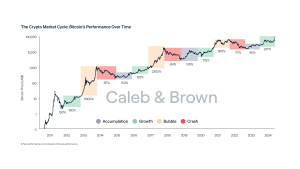Promising Stocks and Current Market Trends
Navigate the stock market with confidence! Discover high-potential stocks showing significant growth. Learn about promising investment opportunities and make informed decisions. Remember, all investments involve risk.
The stock market can be a daunting place for even seasoned investors. Volatility is inherent; understanding market trends is crucial. Successfully navigating this landscape requires diligent research and a keen eye for emerging opportunities. This article will delve into some promising stocks currently showing significant potential, providing you with a clearer picture of where to potentially allocate your investment capital. Remember, however, that investment always carries risk.
Understanding Current Market Trends
Before diving into specific stocks, it’s essential to grasp the broader economic landscape. Inflation rates, interest rate hikes by central banks, geopolitical instability, and technological advancements all significantly influence market performance. Currently, the global economy is experiencing a period of transition. Some sectors are thriving while others face headwinds. This dynamic environment necessitates a nuanced approach to investment strategy, requiring a careful assessment of individual company performance within the context of the overall market.
Analyzing Key Economic Indicators
Several key indicators offer valuable insights into the market’s direction. Inflation data provides crucial information about pricing pressures and the potential for further interest rate adjustments. Employment figures reveal the health of the labor market, affecting consumer spending and overall economic growth. GDP growth rates indicate the overall expansion or contraction of the economy, influencing investor sentiment. By closely monitoring these metrics, you can better anticipate market shifts and adjust your investment portfolio accordingly.
Top Performing Stocks Across Sectors
The following sections will highlight promising stocks across various sectors, offering a diversified perspective on potential investment opportunities. Remember that past performance is not indicative of future results, and thorough due diligence is crucial before making any investment decisions. Consider consulting with a financial advisor to personalize your investment strategy based on your risk tolerance and financial goals.
Technology Sector: Innovation and Growth
The technology sector consistently presents exciting opportunities, driven by continuous innovation and increasing digital adoption. Companies developing cutting-edge technologies in artificial intelligence, cloud computing, and cybersecurity are particularly attractive. These companies often possess high growth potential but may also carry higher risk due to their dependence on rapid technological advancements. Careful selection and diversification within this sector are key to mitigating potential risks.
- Company A: A leader in AI-powered solutions, demonstrating strong revenue growth and market share expansion.
- Company B: A prominent player in cloud infrastructure, benefiting from the growing demand for cloud-based services.
- Company C: A cybersecurity firm specializing in advanced threat detection, experiencing high demand in the face of increasing cyber threats.
Healthcare Sector: Meeting Growing Demand
The healthcare sector shows resilience amidst economic fluctuations, driven by the consistently growing demand for healthcare services. Companies specializing in pharmaceuticals, medical devices, and biotechnology often exhibit strong long-term growth potential. However, this sector is subject to strict regulations and potential delays in drug approvals or product launches. Thorough research into regulatory landscapes and pipeline development is crucial for informed investment decisions.
Consumer Staples Sector: Defensive Plays
Consumer staples, encompassing essential goods like food and beverages, often act as defensive plays during economic downturns. These companies tend to maintain relatively stable demand, even during periods of economic uncertainty. However, their growth potential might be comparatively lower than that of growth sectors. This sector offers stability, making it suitable for investors seeking to reduce overall portfolio volatility.
Energy Sector: Transition and Innovation
The energy sector is undergoing a significant transformation, driven by the global shift towards renewable energy sources. Companies involved in renewable energy technologies, such as solar and wind power, are experiencing rapid growth. However, the energy sector is also subject to significant price fluctuations, influenced by geopolitical events and global energy demand.
Financial Sector: Navigating Market Volatility
The financial sector plays a crucial role in the overall economy, providing services such as banking, insurance, and investment management. Companies within this sector can benefit from market growth, but they are also sensitive to economic cycles and regulatory changes. Careful consideration of the regulatory environment and macroeconomic factors is crucial when investing in this sector.
Diversification and Risk Management
Diversification is a cornerstone of successful investing. By spreading investments across different sectors and asset classes, you can mitigate risk and improve overall portfolio performance. Don’t put all your eggs in one basket; consider a balanced approach that aligns with your risk tolerance and financial objectives; Regularly review your portfolio and make adjustments based on market trends and your evolving financial goals.
Risk management is equally critical. Before investing in any stock, thoroughly research the company’s financial statements, competitive landscape, and future growth prospects. Understand the potential risks associated with each investment and develop a strategy to mitigate those risks. Consider setting stop-loss orders to limit potential losses and avoid emotional decision-making during market downturns.
Long-Term Investing vs. Short-Term Trading
The time horizon for your investment significantly impacts your strategy. Long-term investors typically focus on the fundamental value of companies and their long-term growth potential, weathering short-term market fluctuations. Short-term traders, on the other hand, seek to capitalize on short-term price movements, often employing more aggressive strategies. Choose the approach that best aligns with your investment goals and risk tolerance. Remember, long-term investing often yields better results but requires patience and discipline.
- Thorough research is paramount before investing in any stock.
- Consider consulting a financial advisor for personalized guidance.
- Diversify your portfolio to mitigate risk.
- Develop a clear investment strategy aligned with your goals.
- Regularly review and adjust your portfolio based on market conditions.
Investing in the stock market involves inherent risks. Market fluctuations, company-specific issues, and unforeseen economic events can all impact investment returns. It’s crucial to understand these risks and develop a robust investment strategy that aligns with your risk tolerance and financial objectives. Remember to always conduct thorough research, diversify your portfolio, and consider consulting with a financial advisor before making any investment decisions. Consistent monitoring and strategic adjustments are essential for achieving long-term success in the stock market. The information provided here is for educational purposes only and does not constitute financial advice. Always conduct your own thorough due diligence before making investment decisions. The market is dynamic, and opportunities evolve constantly. Stay informed, remain adaptable, and make choices that reflect your personal financial situation and risk appetite. Success in the market requires patience, discipline, and a well-defined plan.







